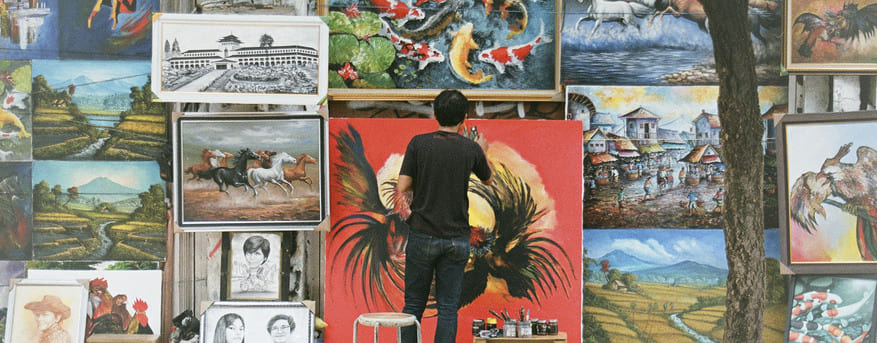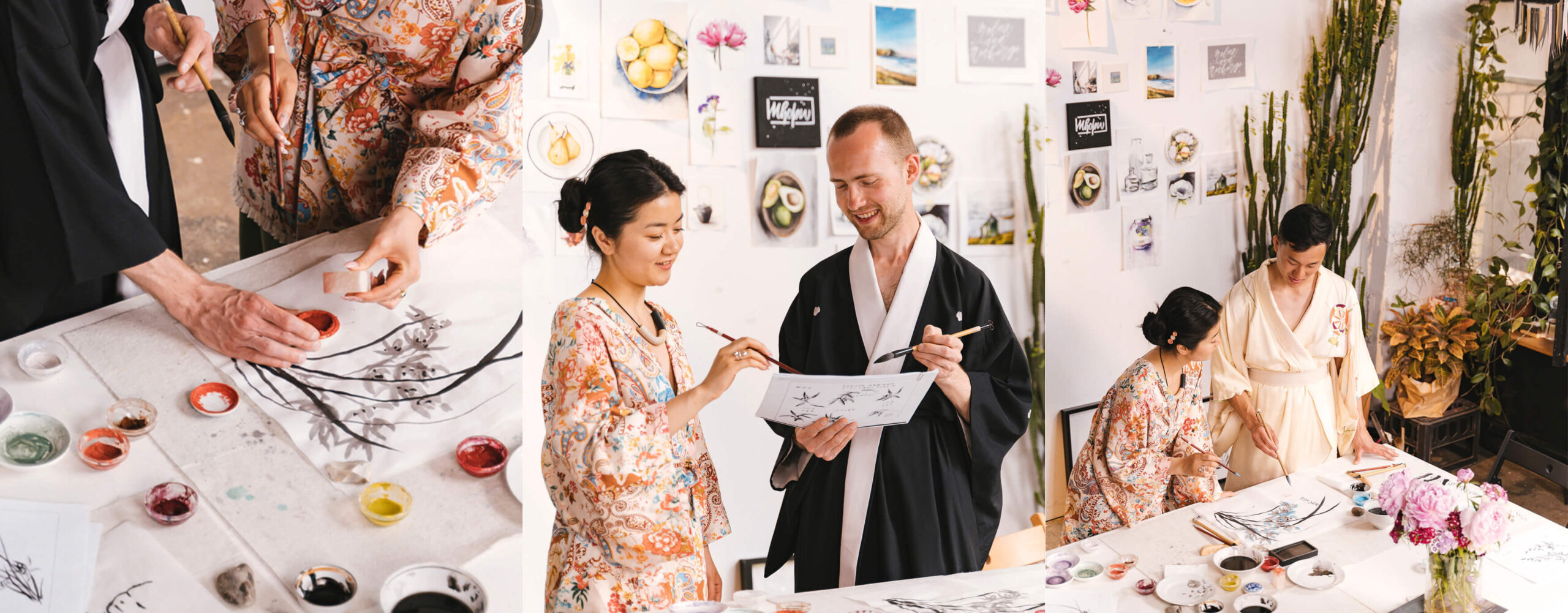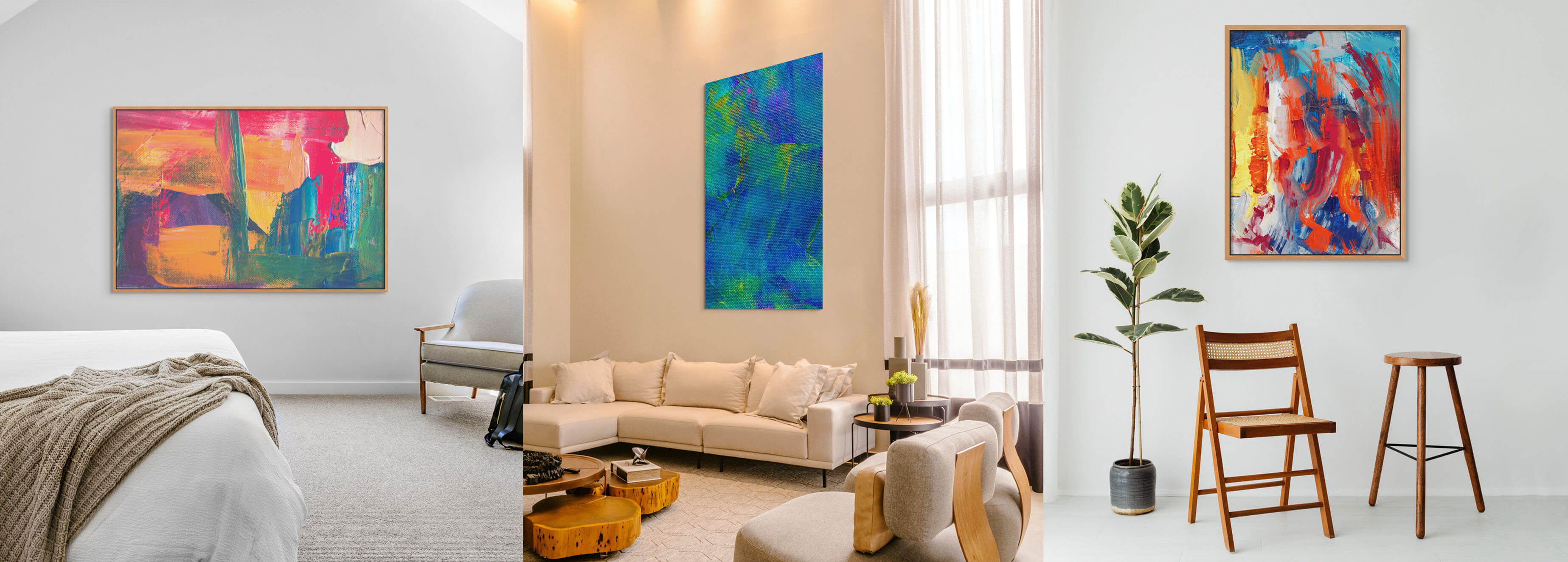Marketing yourself as an artist and your body of work is a personal journey, just like the one you go through when creating every single one of your pieces. Promotion is the “full-circle” moment, is the instant you take action to show the world that something that was once “just an idea” is now a fully rounded artwork It opens doors to exhibitions, commissions, networking and even selling opportunities.
Every artist’s creative path is different, that’s why we decided to go directly to the source and hear from the creators themselves. What does marketing yourself as an artist look like today? Does all of the interaction happen on social media? Read along to find answers and shared experiences from your colleagues.
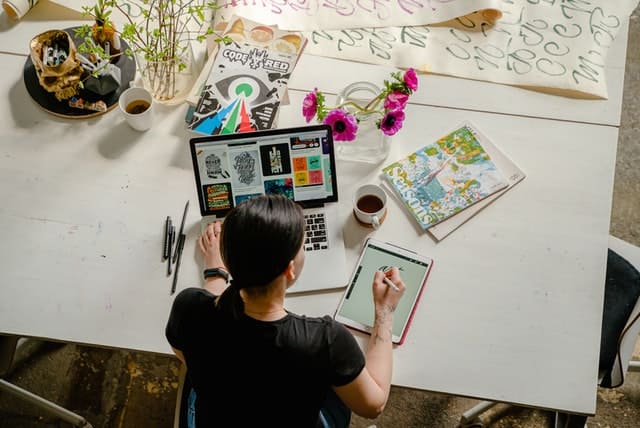
Today’s art world has a new set of challenges for creators looking to expand their business.
Contents
Art marketing: how to let the world know what you do
Step one in promoting your work is knowing what you do and communicating it in a clear and smart way that highlights your unique point of view! But how can you go from writing a simple bio to a proper statement? For contemporary landscape painter Wendy Sharpe, self-observation and guidance are key:
“It was through an intensive business coaching session that I realized I was spread too thin in my creative practice. I pulled back from having three distinct bodies of work to just one (painting). Now that I have clarity of focus I’ve really accelerated my exploration of materials and techniques while chasing down the thing that I wish to communicate in my work, and that’s joy.”
A precise description of your work and everything it involves, from personal inspiration to techniques, can widen the reach of the message that you want to communicate. This sparks a bigger question: who is your audience?. This is the people interested in your work, from art connoisseurs to potential buyers and collectors, your audience is wide and yet it should be clearly defined to be targeted.
Swedish artist, Albin Siggesson has defined it in a simple way: “My audience is anyone interested in me personally and what I feel like creating”. And yes, that means artists’ audiences today are both the gallery visitors and the people who double-tap on their social media posts and click on their website to learn about their latest virtual endeavors.
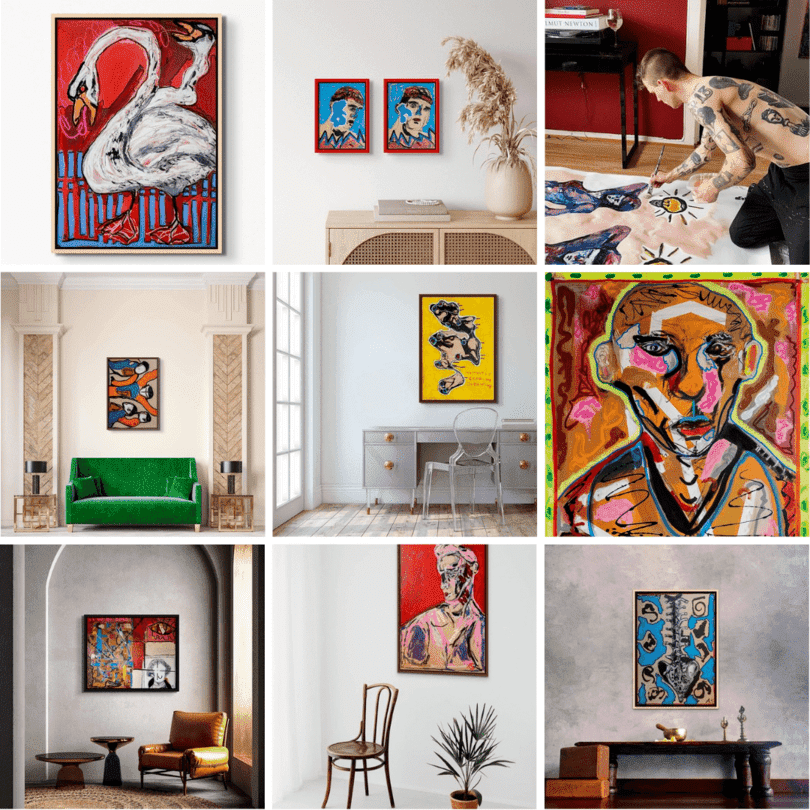
Albin Siggesson professional social media artist profile.
Networking for artists: interactions in a hybrid world
Networking today goes far and beyond your local cultural hot spots, your next commission could come from someone across the world. The internet and social media have really erased frontiers and physical walls. Does that mean we should all believe the hype blindly and follow the latest trends without hesitation? Not really., More than an obligation, expanding your online presence as an artist can be a full creative opportunity. Sharpe describes it this way: “I don’t dance, sing, make clever commentaries or do speech bubbles. Instead, I create content that makes me happy to share with my network.” Value is a differentiating factor.
The best strategy to market your work as an artist is to follow the old proverb: “quality over quantity”. In Sharpe’s experiences, the pandemic and its aftermath gave her a clearer view of what she wanted to create, to post, to share, and how to interact with those invested in her work: “I show up online in ways that are meaningful (and fun) for me and I sincerely hope that resonates for people. I’m seeking out real-life opportunities to connect with other creative people, and attend business events knowing that there are both artists and collectors in attendance.”
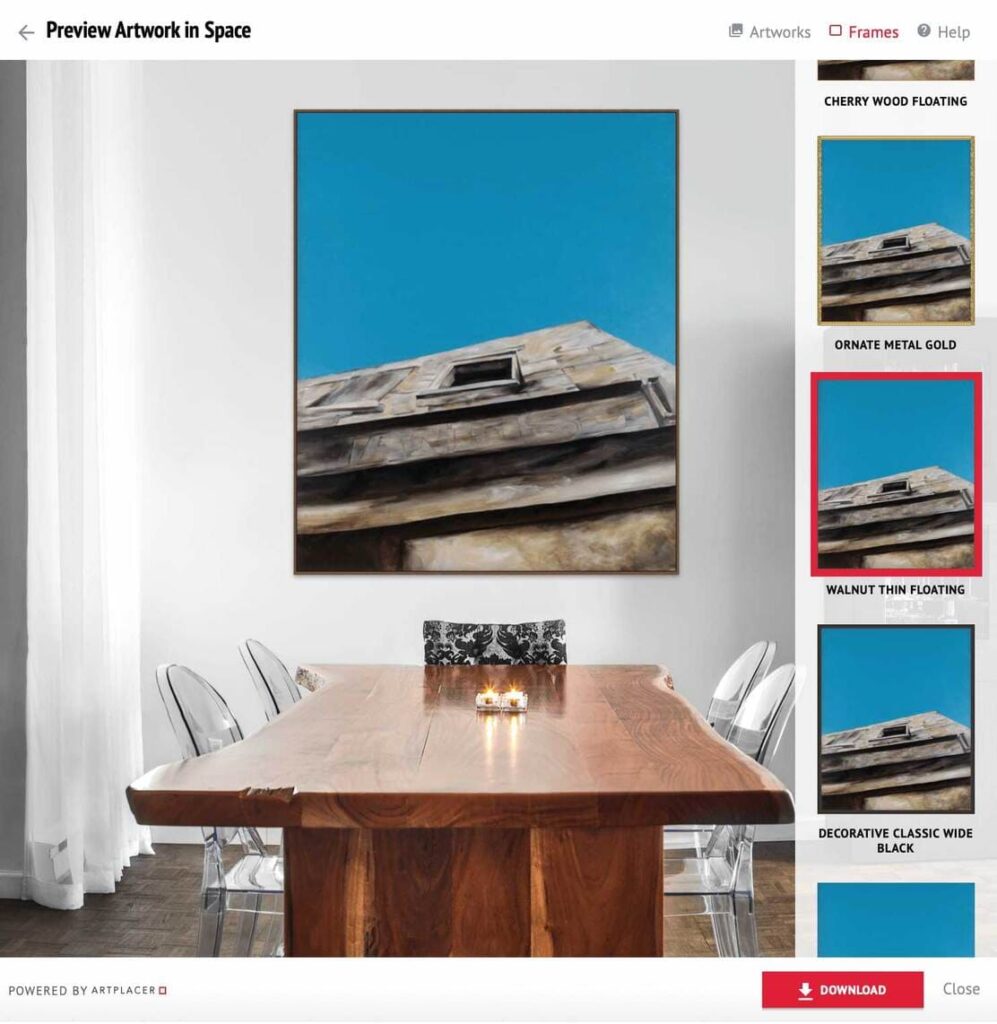
Preview of Wendy Sharpe’s art in a Room Mockup.
Essential marketing tools for artists
Thinking about strategies to boost or start your art business can feel at times a bit challenging. Siggesson says: “I don’t think in terms of strategies, I just want to create”. And this unembellished take tells a lot about the hidden expertise all artists have. Good marketing calls for inventiveness, and when you mash your natural (and cultivated) creativity with “workshops, conferences, and books about marketing and business”, as Sharpe has done, you get to mix business and passion to achieve your overall goal: get people to interact with your creations.
ArtPlacer was created with that goal in mind. When it comes to the essential tools an artist needs today, being able to create anything from 3D digital exhibitions and size-accurate art fair layout presentations, to website “try before you buy” options and social media-worthy mock-ups of artworks in different spaces becomes a game-changer for artists, both novel a seasoned.
Sharpe’s experience with ArtPlacer’s features has been key in her marketing strategy: “It has helped me give a feeling for size and dimension so my collectors can make a decision and select a piece that works the best for them.”
Marketing yourself as an artist is all about creating fully rounded experiences and interactions around your work. And now that you do you know how others approach it, how will you do it?
